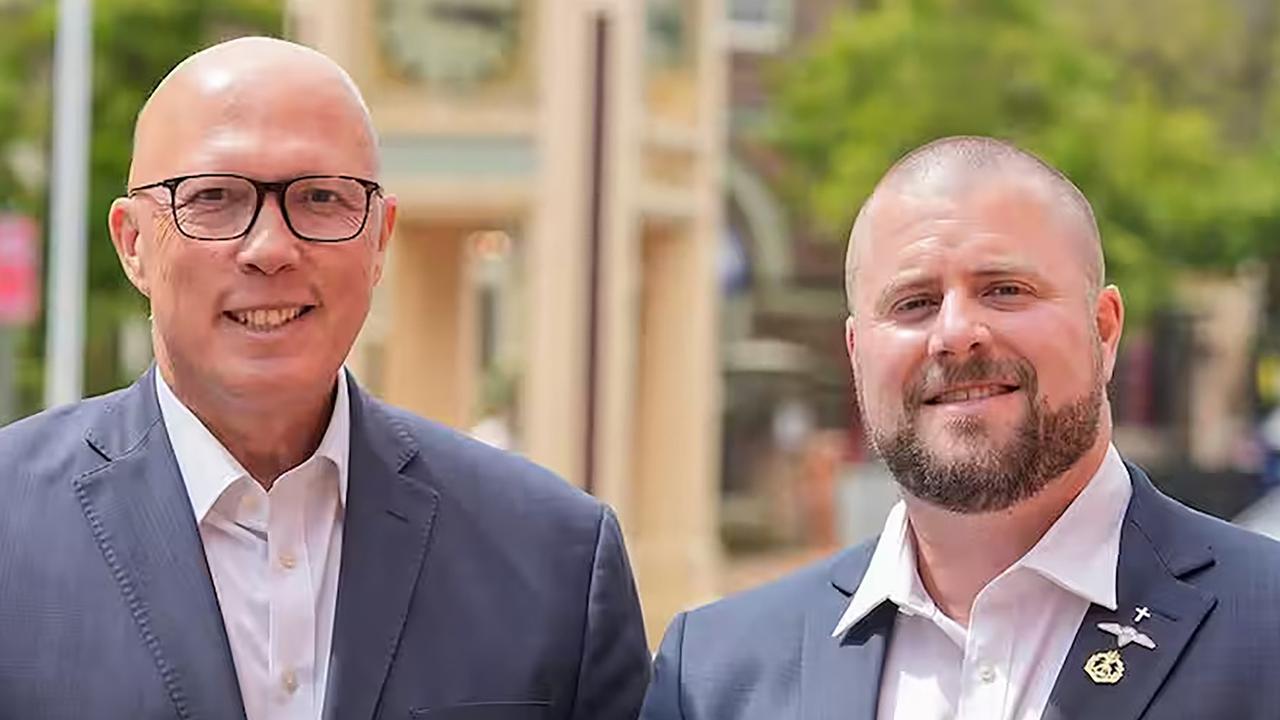Foreign investment interest means fast rail in Australia could finally become a reality
Fast rail in Australia has been a long-held dream for many in the country and one expert believes conditions could finally be right for projects to move ahead.
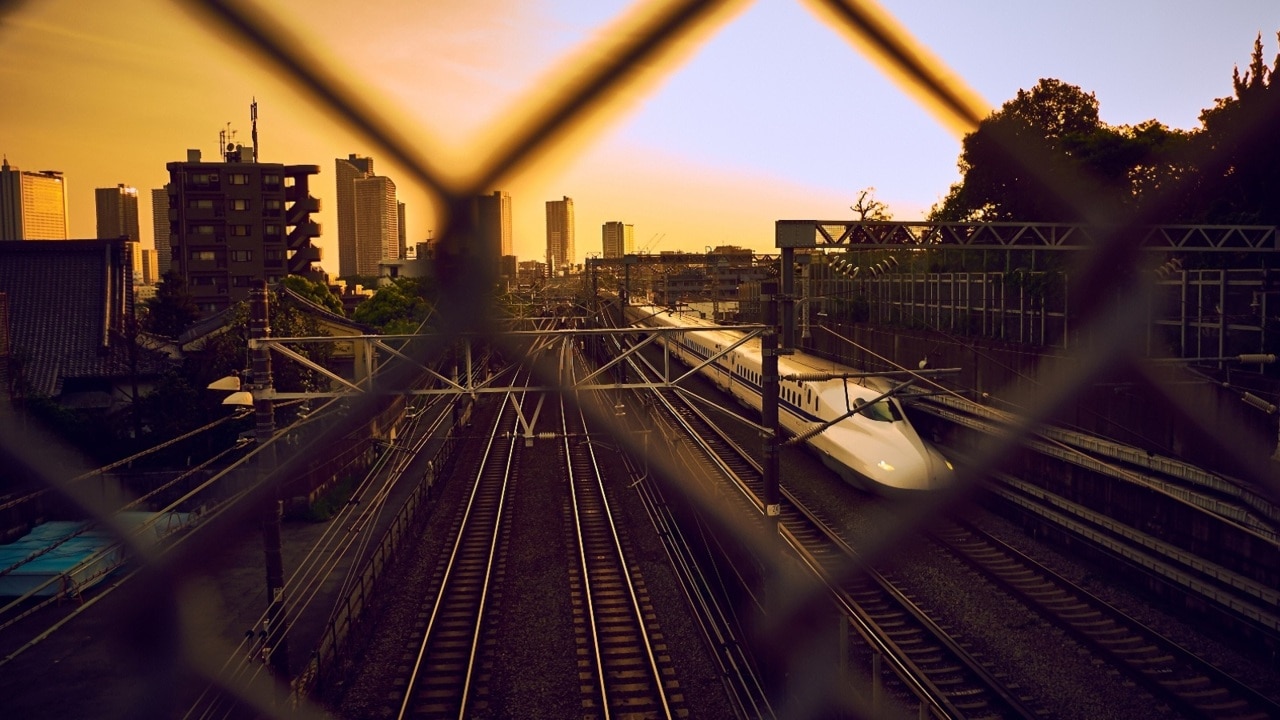
Innovation
Don't miss out on the headlines from Innovation. Followed categories will be added to My News.
Fast rail has long been a pipe dream that many have given up on in Australia but one expert believes the timing could finally be right for the country’s first projects.
Demographer Simon Kuestenmacher believes there’s a real likelihood of fast rail becoming a reality in Australia as cashed up foreign investors look to put their money into safe assets.
The co-founder of The Demographics Group said there was a lot of cheap money around thanks partly to low interest rates at the moment, but there were not enough investment opportunities.
Pension funds in countries like Canada and Japan, which are responsible for investing hundreds of millions of dollars, often search for investment opportunities around the world but their ageing populations meant they didn’t want to put their money into projects that were too risky.
“They are looking for low but predictable growth,” Mr Kuestenmacher said.
He said there were increasing numbers of funds in this position, and they were all looking for investments in slow-growth economies like Australia.
“If you had money to invest and you were young, you would invest into countries like Bangladesh and Ethiopia because they are growing at a very fast rate so you get higher returns but they are very volatile,” he said.
Basically investing in Australia is like investing in shares in one of the big four banks – it’s the safe place to put your money if you want to withdraw it sooner rather than later. This makes it attractive to pension funds that want to preserve their funds as their members near retirement age.
Mr Kuestenmacher said there were not that many countries or projects that fit the criteria of being democracies, with stable governments that had consistent growth.
“For example, if you look at democracies you could look at Europe but their growth is quite stagnant,” he said.
“It’s hard to find growth opportunities but in Australia and New Zealand, everything is growing at stable rates — even if it’s not a breakneck speed — and there will probably be more growth once immigration resumes.
“So we are an increasingly attractive investment location.”
Mr Kuestenmacher said foreign investors could be looking at investing in privately owned assets including Australian real estate, infrastructure including fast rail, businesses like child care centres, or even in the country’s marinas.
“These are attractive assets for international buyers to buy and they are already looking, there’s very high competition, that’s why property hasn’t plummeted — because of all this cheap money out there,” he said.
In the post-covid world Australia's geographic isolation is also counting in its favour.
RELATED: Why very fast rail could be Australia’s covid cure

“It’s quite an interesting turnaround in fortunes,” Mr Kuestenmacher said.
“In the 1960s we suffered from the ‘tyranny of distance’ as we were too far away from all the delicious growth happening globally but in times of uncertainty, being a bit more removed from things makes us more interesting.
“Geography is playing in our favour.”
‘We’re racing to create enough workers’
However, there are barriers to Australia taking advantage of the opportunities on offer.
Mr Kuestenmacher said in order for investors to fund the projects, developers or governments must first be willing to build the infrastructure, and there is a skills shortage in the country that makes this harder.
“There’s an appetite, but the risk is not being able to build the infrastructure because we have very low unemployment rates,” Mr Kuestenmacher said.
“We’re racing to create enough workers.
“So we want to open our borders just to capitalise on our potential for growth.”
Mr Kuestenmacher said there was a national need for projects like fast rail because it would be an opportunity to upskill many workers and pull them into middle-skill jobs — a group that has shrunk with the loss of jobs like industries like manufacturing for example.
In order to support this, he believes TAFE courses should be free, so Australia can create more skilled workers in manufacturing and engineering.
Currently some students can enrol in a HECS-style scheme to pay back the costs of their courses once they earn a certain amount. There are also some low-fee or fee-free apprenticeships and traineeships available.
“It’s important for Australia to make TAFE free and we will get this back in increased GDP, otherwise we could miss out of these infrastructure opportunities, which unlocks so much economic growth opportunities,” Mr Kuestenmacher said.
“We would be mad not to utilise the growth opportunities we have at the moment.”
Mr Kuestenmacher said moving lower-skill workers like a forklift driver into better quality jobs in construction would take the burden off the pension system and the infrastructure itself would also provide benefits after it was built.
“If this was to eventuate and if most workers were to be trained in Australia then this would solve so many problems at once.”
RELATED: What’s in the federal budget 2021 for young people
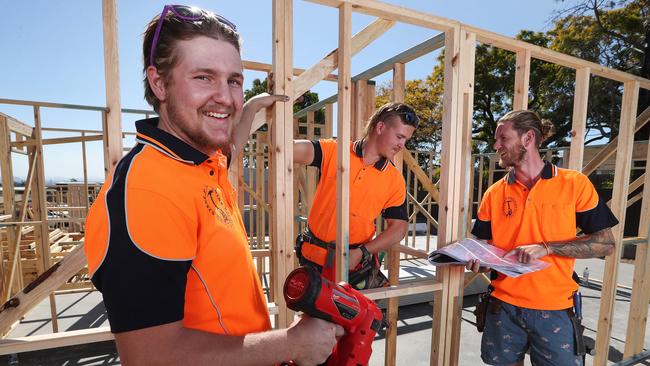
‘Optimism’ for fast rail projects
When it comes to fast rail Mr Kuestenmacher believes these projects could get off the ground if there was the political will to move them forward.
“It’s more likely than ever before that these projects will emerge because there’s people out there who would be willing to pay for it,” he said.
When it comes to infrastructure projects, Mr Kuestenmacher points to things like toll roads, which have been built by private companies, or in partnership with state or federal governments. Part of the toll revenue goes to the investor and then after a certain amount of years the ownership of the road is handed back to the government.
“There are many different ways of financing this, there are many ways companies build infrastructure overseas and make money out of it,” he said.
Investors also know the infrastructure — and their investment — will be well maintained in Australia.
However, Mr Kuestenmacher doesn’t think pie-in-the-sky projects like a Hyperloop, which is untested technology that could cut travel time from Melbourne to Sydney to under 40 minutes, is feasible.
The Grattan Institute has also described an east-coast bullet train proposal as an “expensive folly” and would not be as useful as what everyone thinks.
RELATED: Hyperloop idea pitched to government
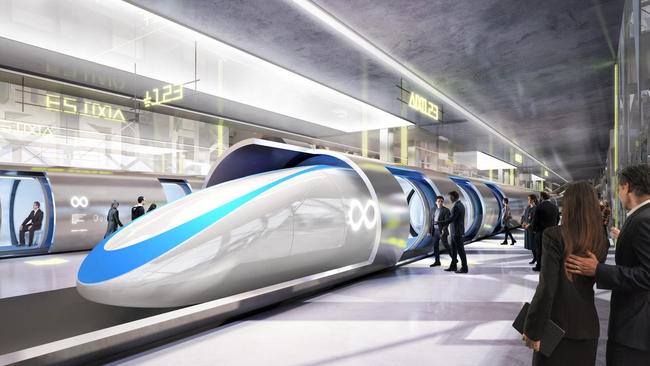
But Mr Kuestenmacher believe there’s would be potential for fast trains, travelling around 200km per hour rather than at superfast speeds, to connect regional areas with capital city hubs. This includes trains from Melbourne to Geelong, Ballarat and Bendigo. It could also include trains from Sydney to Wollongong and Newcastle, although this could be dependent on geography.
These regional centres could then become “dormitory suburbs” where someone could live more cheaply but still work in the city a couple days a week.
Mr Kuestenmacher said a Sydney to Canberra route, which currently takes over four hours by train, was also possible because it would probably not need any stops, and because there were often disruptions to flights landing at Canberra Airport due to fog.
“The most important thing is that while you are sitting down in the train, that it’s spacious, you have a little desk you can work on, or watch movies on an iPad, in a very comfortable way,” he said.
“It’s more important that the train has good Wi-Fi than how fast it goes.
“It also needs to have a decent restaurant on board and allows people to consume alcohol.
“You just need to make it a really comfortable way of travelling.
“It could become a chic way of travelling.”
RELATED: Cold water poured on east coast high speed rail ambition
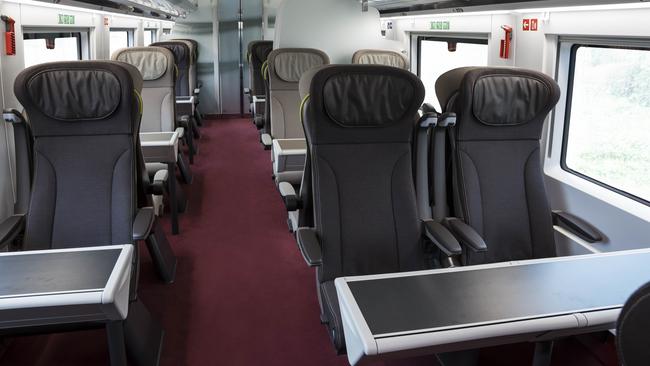
The Victorian Government has already announced plans for a faster rail corridor between Melbourne and Geelong. Stage 1 will take 15 minutes off the travel time, bringing the journey time to 50 minutes. Eventually this will be brought down further to 40 minutes.
The state and federal governments are funding the first stage with a $2 billion investment with construction due to start in 2023.
NSW Premier Gladys Berejiklian has also not ruled out the possibility of high speed rail — which is generally considered to involve speeds of more than 250km/h — but noted that getting different jurisdictions to agree was a challenge.
“I’m always optimistic about our ability to have interstate faster rail but it would involve the Federal Government and a number of state jurisdictions and that could take some time,” Ms Berejiklian told an infrastructure summit this year.
“But if we can show in NSW what’s possible and what’s feasible and how we can manage it in the balance sheet, perhaps that will inspire others,” she said.
Major Projects Canberra chief projects officer Duncan Edgehill has described fast rail — which can involve a less expensive mix of new and upgraded tracks with speeds up to 200km/h — between Sydney and Canberra as a “no-brainer”.
Mr Kuestenmacher agreed that one of the biggest challenges to making fast rail a reality was getting the projects through the planning process, which could involve consultation and approvals from many local government authorities as well as potentially state and federal approvals.
“It goes through so many jurisdictions — each has a right to object, it’s a nightmare to build this,” he said.
Despite the hurdles Mr Kuestenmacher is optimistic.
“There’s a real likelihood for fast rail to eventuate, if the money comes in and politicians are more willing,” he said.
“I’m quite optimistic that this time around, this could work.”
charis.chang@news.com.au | @charischang2
Originally published as Foreign investment interest means fast rail in Australia could finally become a reality


